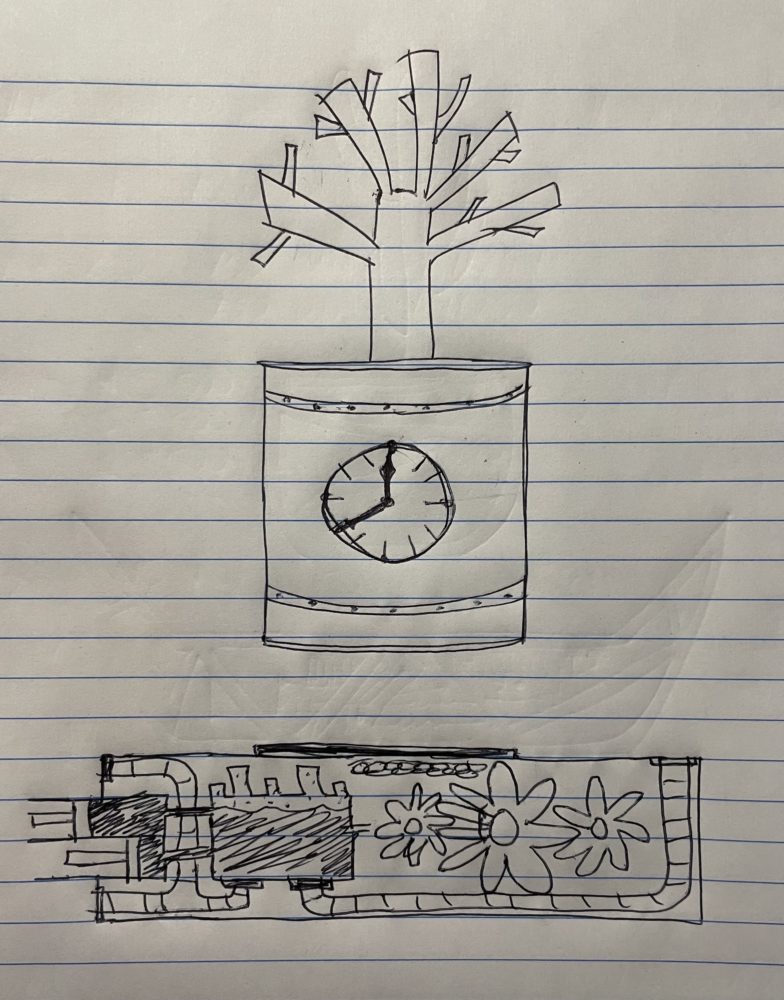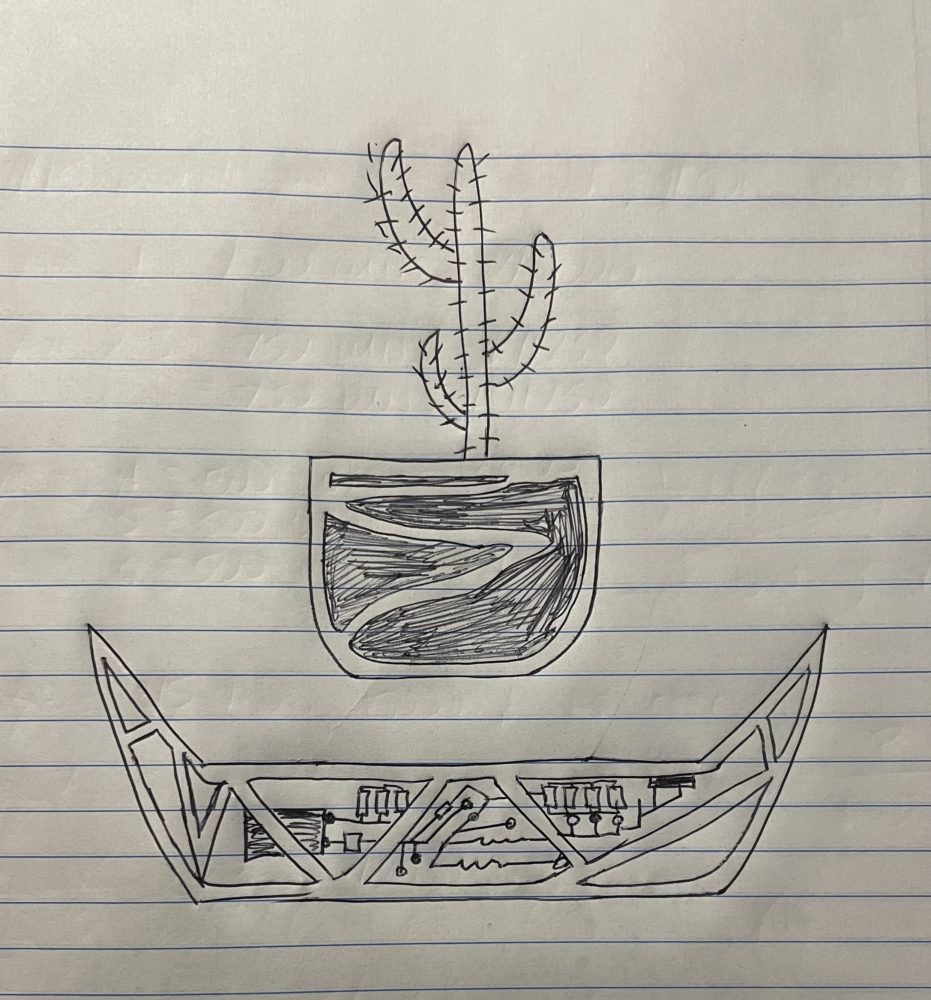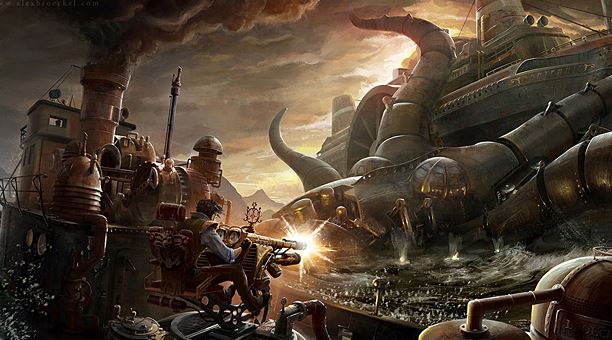For my final project I will be making a magnetic levitation flower pot, an innovative piece of technology that using magnetism to suspend a small flower pot in mid-air. My project will be inspired by the minimalist and cubist aesthetics, so the flower pot will be designed to be simple, functional, and aesthetically pleasing. The minimalist aesthetic emphasizes simplicity, clean lines, and the use of space. The magnetic levitation flower pot incorporates these principles by using a simple, streamlined design that allows the plant to be the focal point. The flower pot and base will be made of 3D printed PLA, which will give it a sleek, modern look that will complement my “office” décor, and allow me to fully customize the base and the pot using Solidworks.
The cubist aesthetic emphasizes geometric shapes, bold colors, and the use of abstract forms. The magnetic levitation flower pot incorporates these principles by using a square-shaped base, with chamfered edges, made of PLA. This will create a strong, industrial look that is both bold and visually interesting. Since I plan to combine minimalist and cubist aesthetics to create a functional and aesthetically pleasing object, I have opted to sketch it in steampunk and cyberpunk aesthetics, both wildly different than the minimalist/cubist route I am headed.


Steampunk and cyberpunk are two distinct sub-genres of science fiction with unique visual aesthetics. While both genres explore alternate futures and focus on technology, they differ in terms of their time periods and visual styles. Steampunk is typically “older”, set in a Victorian or Edwardian era and is characterized by a fusion of advanced technology and retro-futuristic design. The genre often features steam-powered machines, clockwork mechanisms, and ornate designs. Steampunk technology is often portrayed as bulky and clunky, with external gears, pistons, and cylinders visibly moving and churning, in order to characterize this, my steampunk design features external gears, pistons, and other ornamentation as well as a miniature oil drum with a clock on it for the flower pot.


On the other hand, cyberpunk is set in a dystopian future where technology has advanced to a point where it has become ubiquitous, invasive, and disconcerting. The genre typically features advanced computer systems and cybernetic implants. The technology in cyberpunk is sleek and minimalist, often invisible to the naked eye, in order to highlight these features, my cyberpunk design features metal and glass to allow the viewer to see the dirt inside the flowerpot and the electronics shielded by the base. While steampunk and cyberpunk are both science fiction sub-genres that explore technology and its impact on society, they differ in terms of their visual aesthetics. Steampunk is characterized by its retro-futuristic designs and whimsical style, while cyberpunk is characterized by its high-tech gadgets and gritty, urban aesthetic. While both genres offer unique perspectives on the future, they are both are equally distant from the way I want my project to turn out.
Sources:
- https://admindagency.com/blog/cyberpunk-aesthetic-do-cyborgs-dream-about-the-fall-of-the-system/
- https://allaboutsteampunk.com/


2 Comments. Leave new
Wow Jon, your magnetic levitation flower pot sounds amazing! I love that you are incorporating both minimalist and cubist aesthetics into the design, and the use of 3D printed PLA will give it a modern and sleek look. The steampunk and cyberpunk sketches are both really interesting and offer unique visual styles, although I can see why you ultimately decided to go in a different direction. Have you considered using other 3D printing materials to prevent the part to get humidity?
I really appreciate the choice of the steam punk and cyberpunk aesthetic. They fit very nicely with the functional element of floating the flower pot. I’m curious, do you have any plans to mitigate PLAs poor resistance to water and wear in your final product?